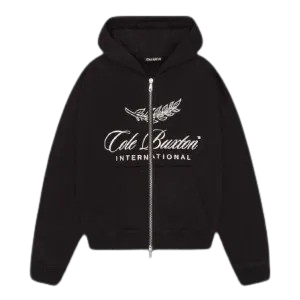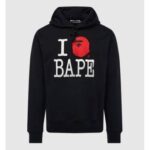Introduction to Bape Clothing
Streetwear has always been more than just fashion—it’s an identity, a voice, and a movement. Among the biggest names in the streetwear world, Bape (A Bathing Ape) stands out as one of the most monumental brands ever created. If you’ve ever seen bold camo hoodies, sneakers with a star design instead of the Nike swoosh, or shark-faced zippers pulled up to cover the head, chances are you’ve witnessed the influence of Bape.
Founded in the heart of Harajuku, Tokyo, in 1993, Bape Clothing quickly became a symbol of exclusivity, individuality, and rebellion against mainstream fashion. The brand introduced styles that pushed the boundaries of what streetwear could be—merging Japanese creativity with global pop culture and hip-hop influence.
But what makes Bape so monumental? Is it the rarity of its drops, the celebrity endorsements, or the unmatched creativity of its founder, Nigo? The truth is, it’s all of the above—and more. To truly understand the cultural phenomenon of Bape, we need to look back at its origins, its rise to global dominance, and why it continues to reign supreme in the fashion industry even decades later.
The Origins of A Bathing Ape (Bape)
The story of Bape starts with Nigo (Tomoaki Nagao), a Japanese designer and visionary. Inspired by the American hip-hop scene and street fashion, Nigo launched Bape in 1993 with a small store in Harajuku, Tokyo. At the time, the Japanese fashion scene was exploding with creativity, and Nigo wanted to create something unique—something that blended bold visuals with exclusivity.
The name “A Bathing Ape” comes from a Japanese phrase: “a bathing ape in lukewarm water,” which playfully refers to young people living a comfortable life without much struggle. It was both a cultural nod and a clever commentary on consumerism.
In the early years, Nigo only produced a very limited number of pieces, often around 30–50 per design. This scarcity instantly gave Bape a reputation for being rare and hard to get. Instead of mass production, Bape thrived on exclusivity—making it the perfect brand for a generation that wanted individuality.
By the mid-1990s, Bape was already making waves not only in Japan but also internationally. Hip-hop artists and fashion-forward celebrities began embracing the brand, and soon Bape was no longer just a Japanese streetwear experiment—it was a global streetwear revolution.
How Bape Became a Streetwear Giant
So, how did a small Harajuku brand transform into a streetwear empire? The answer lies in Bape’s unique strategy of exclusivity and hype. Unlike traditional brands that aimed for mass production, Bape thrived by releasing extremely limited-edition drops. People lined up for hours outside stores, hoping to grab a rare hoodie, T-shirt, or sneaker before it sold out.
This scarcity created a resale market where prices for rare Bape items skyrocketed. Suddenly, owning Bape wasn’t just about fashion—it was about status. If you had a Shark Hoodie or a pair of Bapesta sneakers, it signaled that you were part of an exclusive culture.
Bape’s rise also had a lot to do with hip-hop culture. Rappers like Pharrell Williams, Kanye West, and Lil Wayne began wearing Bape in music videos and on stage. This gave the brand massive exposure in the U.S. and turned it into a global streetwear powerhouse. Bape wasn’t just clothing anymore—it became a cultural icon.
The Vision Behind Bape
At its core, Bape is more than fashion—it’s a lifestyle philosophy. Nigo built the brand around the idea of individuality, creativity, and exclusivity. Every design had a story, from the vibrant camouflage patterns to the playful graphics inspired by pop culture and anime.
Nigo’s vision was also deeply influenced by his love of hip-hop and American pop culture. By mixing Japanese design aesthetics with Western cultural references, he created something entirely new and refreshing. This East-meets-West philosophy made Bape stand out in a way no other brand could.
The cultural impact of Bape goes beyond just clothing. It shaped how people think about fashion, hype, and identity. For many, wearing Bape is not just about style—it’s about making a statement: “I’m different, I’m exclusive, and I’m part of something bigger.”
Signature Bape Clothing Styles
When people think of Bape, a few signature pieces instantly come to mind. These designs aren’t just popular—they’re iconic and have shaped the entire streetwear movement.
-
Bape Camo: The signature camouflage print, often in vibrant colors like pink, purple, and green, is one of the most recognizable elements of the brand. Unlike military camo, Bape’s version is playful, bold, and instantly eye-catching.
-
Shark Hoodie: Perhaps the most famous Bape item, the Shark Hoodie features a shark face design that zips all the way up to cover the head. Bape Hoodie It’s not just clothing—it’s a statement piece that screams individuality.
-
Bapesta Sneakers: Inspired by the Nike Air Force 1, Bapesta sneakers swap the swoosh for a star logo. These sneakers became a cultural phenomenon in the 2000s and remain highly sought after by collectors.
These signature items are the reason why Bape is considered monumental in the fashion world. They’re not just products—they’re cultural artifacts that tell a story of creativity, exclusivity, and influence.
Bape Collaborations and Global Influence
One of the most exciting aspects of Monumental Bape Clothing is its legendary collaborations. From sneakers to apparel, Bape has teamed up with some of the biggest names in fashion, music, and entertainment. Each collaboration has added to the brand’s mystique and cemented its global influence.
High-Profile Collaborations:
Bape has worked with heavyweights like Nike, Adidas, Supreme, and even luxury houses such as Comme des Garçons. Each drop brought together different worlds of fashion, creating pieces that were not just clothing but collector’s items. For example, the Bape x Adidas Superstar sneakers are still considered a milestone in sneaker culture.
Hip-Hop Culture & Celebrity Endorsements:
From Pharrell Williams and Kanye West to Drake and Travis Scott, Bape has been a constant favorite among hip-hop royalty. In the early 2000s, Pharrell and Nigo’s partnership brought Bape directly into American culture. Rappers wore Shark Hoodies in music videos, and soon, Bape became the official streetwear of hip-hop. This celebrity influence skyrocketed demand, making Bape synonymous with fame, status, and style.
Limited Edition Drops & Hype Culture:
Bape mastered the art of scarcity marketing. By releasing small quantities of unique designs, the brand created a “get it before it’s gone” mentality. This fueled massive hype and resale markets, where some Bape pieces sold for 5x or 10x their retail price. Today, this model is copied by many streetwear brands, but Bape was one of the first to perfect it.
Bape’s collaborations and cultural influence prove one thing—it’s not just clothing; it’s a global phenomenon.
Why Bape Clothing is Monumental
Why does Bape deserve the title of monumental? The answer lies in how it shaped streetwear as a cultural revolution.
Streetwear as Identity:
Before brands like Bape, clothing was often just fashion. But Bape turned fashion into a lifestyle. Wearing a Shark Hoodie or Bapesta sneakers wasn’t about blending in—it was about standing out. It gave people a voice in a world where individuality was becoming harder to express.
Exclusivity Factor:
The fact that Bape pieces were so hard to get turned them into symbols of success. People lined up outside Bape stores for hours, sometimes days, to grab a piece of history. Scarcity became part of the appeal. If you owned Bape, you weren’t just stylish—you were part of an elite culture.
Lifestyle Statement:
From hip-hop to sports to luxury fashion, Bape created a bridge across different cultural worlds. It wasn’t just “streetwear” anymore—it became a global lifestyle statement. This transformation is why Bape is considered monumental. It didn’t just follow trends; it set them.
The Evolution of Bape Over the Years
Bape’s journey has been nothing short of extraordinary. From a small Harajuku boutique to a global empire, the brand has constantly reinvented itself while staying true to its roots.
From Harajuku to Global Markets:
In its early days, Bape was mainly popular in Japan. But once hip-hop stars started wearing it, demand spread to the U.S. and Europe. Today, Bape stores exist in major cities like New York, London, Hong Kong, and Paris.
Under New Ownership:
In 2011, Nigo sold Bape to the Hong Kong fashion conglomerate I.T Group. Many fans worried that Bape would lose its soul. However, the brand has continued to thrive, balancing exclusivity with global expansion. Even though Nigo eventually moved on to new ventures (like Human Made), his legacy still drives the brand.
Adapting to Modern Fashion:
In the age of Gen Z and digital fashion, Bape has stayed relevant by collaborating with gaming companies, anime series, and digital platforms. Limited-edition NFT drops, partnerships with Fortnite, and anime-inspired designs have kept Bape fresh and appealing to new audiences.
The evolution of Bape proves its strength—it’s not just surviving, it’s leading.
Bape vs. Other Streetwear Giants
Bape isn’t the only streetwear brand in the game. Giants like Supreme, Off-White, and Palace also dominate the scene. But how does Bape stack up against them?
Bape vs. Supreme:
Supreme relies on minimalism, while Bape thrives on bold, colorful designs. Both brands use limited drops, but Bape has a stronger connection to Japanese culture and global collaborations.
Bape vs. Off-White:
Off-White represents luxury streetwear, blending high fashion with urban style. Bape, on the other hand, focuses on playful graphics, camo, and pop culture references. While Off-White aims for sophistication, Bape keeps things fun and loud.
Bape’s Uniqueness:
What makes Bape stand out is its ability to merge fashion, music, and culture. Unlike most streetwear brands, Bape has become an icon not just in clothing but in music videos, sneaker culture, and global pop culture. It’s not just about fashion—it’s about influence. Shop Now





